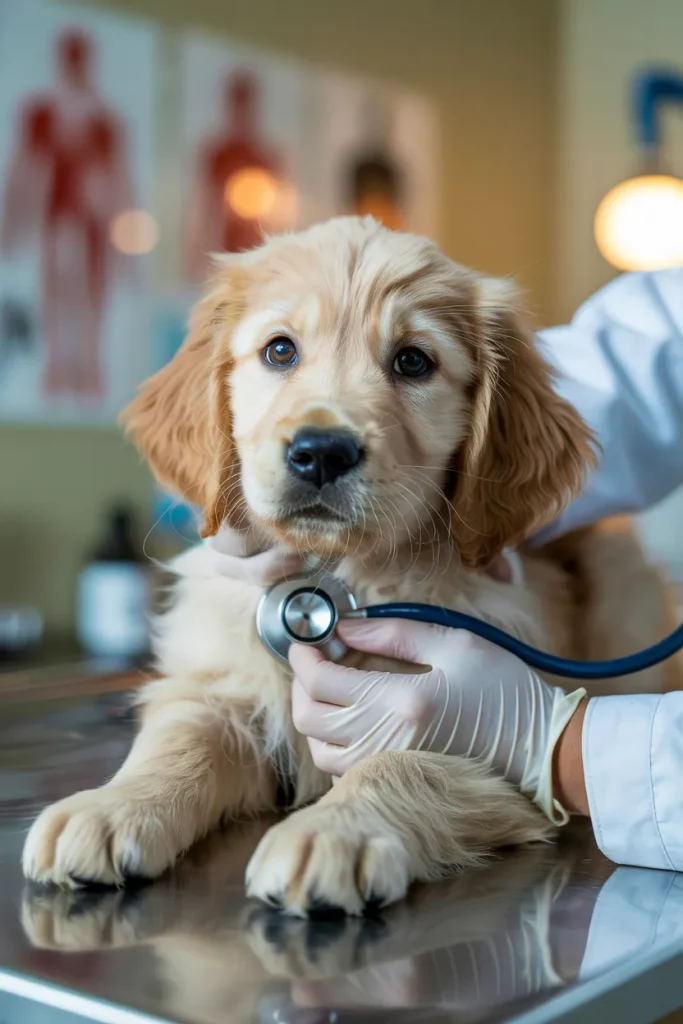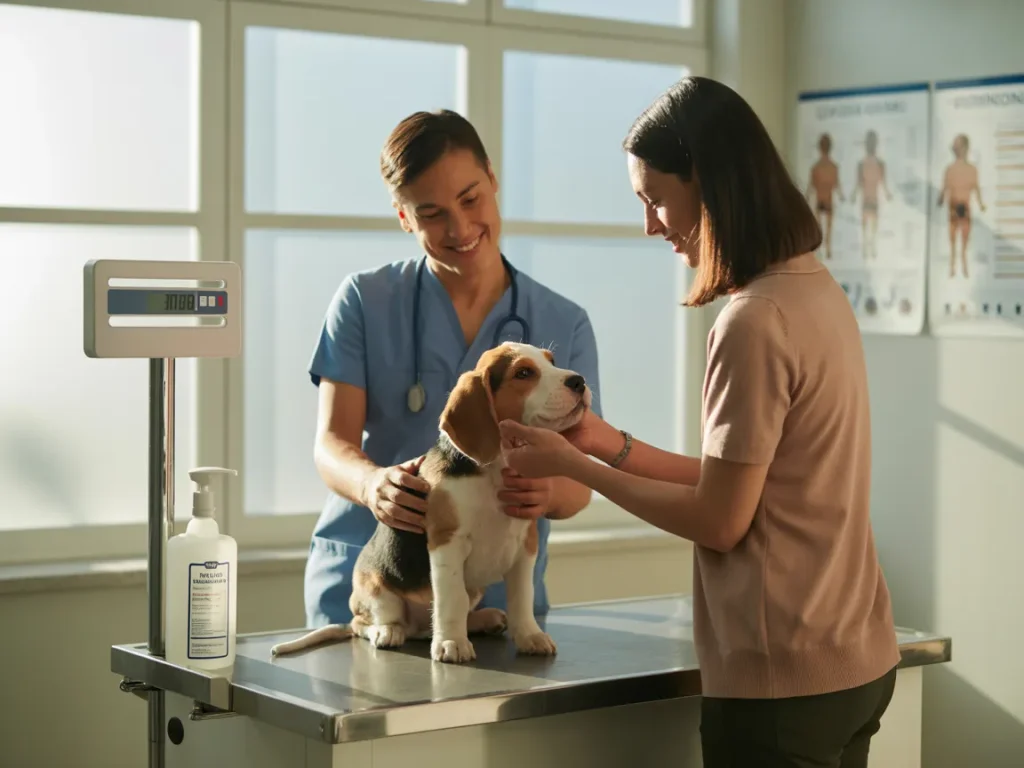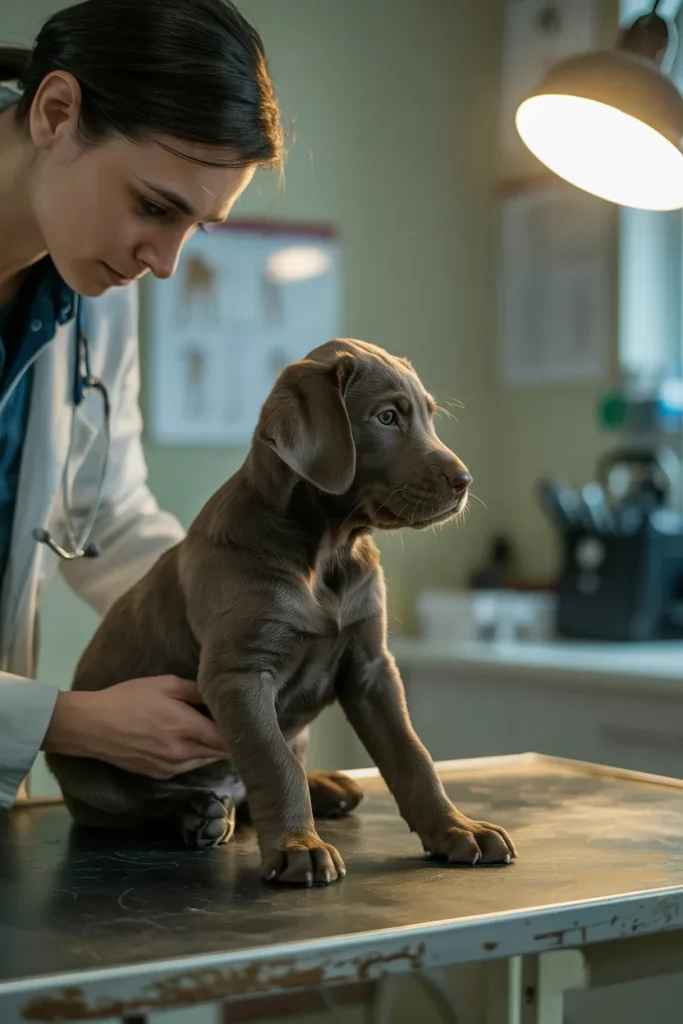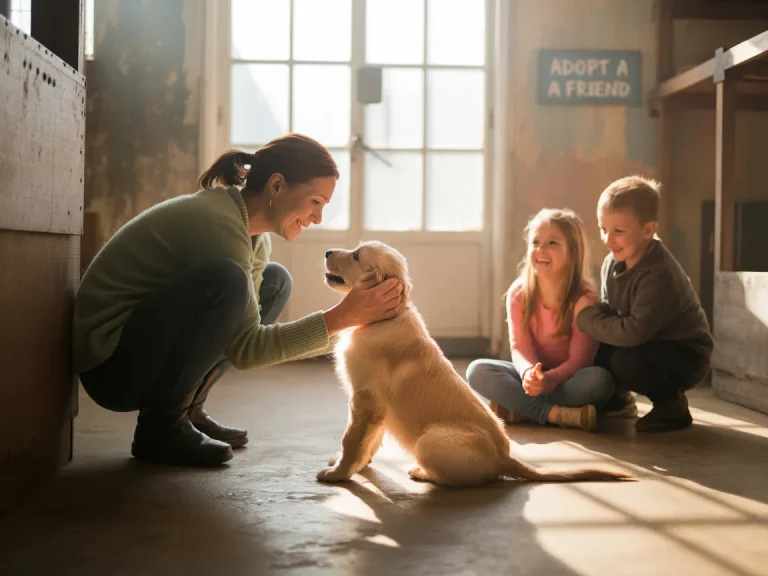Your new puppy has already mastered the art of melting hearts—but long-term health is something you build, not hope for. Whether you’re sharing your couch with a bouncey golden retriever pup, a pint-size pomeranian, or a curly maltipoo, every little ball of fur needs a plan. This Puppy Protection Plan gives you 10 must-do health and vaccine touchpoints so your puppy boy or girl doesn’t just grow up—they thrives.

Why a Structured Plan Matters
Think of puppyhood like a high-speed movie: growth, immune development, and vulnerability all happen in a blur. Miss a vaccine booster or skip a deworming window, and you’ve left a gap an avoidable illness can slip through. This plan pulls together practical owner tips, sensible timing, and the kind of “been there, fixed that” advice you’d get from a seasoned dog person, all in one place. Want your pup to outpace the risks? Structure helps you do that without overthinking.
1. The Comprehensive Intake Exam
Bring your new pup in for a full once-over within the first three days of home life. A vet will listen to the heart and lungs, check eyes, ears, and gums, feel the belly for anything odd like hernias, and get a baseline snapshot of their overall health. That baseline is gold—if you’ve got a beagle who’s already flirting with ear infections, you’ll thank yourself later when you can spot changes early instead of playing catch-up. It’s like taking a “before” photo so you can see how well you’re doing down the road.

2. Core Vaccine Timeline
Those scary names—distemper, parvovirus, adenovirus, parainfluenza—are mostly stories of what happens when prevention isn’t taken seriously. Puppies get their first round around 6–8 weeks, a second at 10–12, and then another at 14–16 weeks, often with rabies added per your local laws. Big guys like golden retrievers sometimes need a fourth distemper booster around 18–20 weeks, so double-check with your vet rather than guessing. Staying on schedule is like building a layered defense: each vaccine adds another plank to the puppy-proof shield. The AAHA canine vaccination guidelines and the AVMA’s breakdown of core versus non-core vaccines are great references to help tailor the series to your pup’s lifestyle and risk profile.
3. Parasite Prevention Protocol
Worms, fleas, and ticks aren’t just annoyances—they siphon nutrition and can carry disease. Most puppies start a broad-spectrum dewormer every two weeks until about 12 weeks old, then switch to monthly maintenance. If your adventures include trails or tall grass—say, hiking with a corgi who thinks every blade of grass is a personal invitation—look into isoxazoline-based chews that cover both fleas and ticks in one go; the CDC’s prevention guidance on flea and tick control gives a solid primer on keeping parasites off your pup and what to watch for in your environment. It’s easier to prevent than to treat, and your pup will thank you by staying itchy-free and energetic.

4. Nutrition & Body Condition Check
Food isn’t just fuel; it’s the scaffolding for bones, the raw material for a strong immune system, and the difference between a pup who blooms and one who lags. Always feed a diet formulated for puppies—adult food is like giving a growing child a fast-food-only diet. Whether you choose commercial kibble or cook under vet guidance, keep an eye on body condition monthly. Run your hands along their ribs: you should feel them easily but not see them popping out like drumsticks. If the balance is off, tweak portions—less isn’t always better, and more isn’t always loving.
Here’s a small personal favorite: when I trained new owners, the “feel test” was their go-to. One Labrador pup’s owner was convinced the dog was skinny until we did the rib check together—turned out he was spot-on, and the owner relaxed. That tiny routine builds confidence in both of you.

DIY Treat Tip
Avoid sugary, mystery-ingredient snacks. Instead, bake simple dog biscuits with oat flour and pureed pumpkin. They’re gentle on puppy tummies and way more satisfying than the kind of “puppy chow” snack mixes that promise fun but deliver upset stomachs. Think of it as trading neon junk food for a homemade, well-tailored suit of treats—your pup will wear their health better.
5. Socialization & Stress-Free Handling
Health isn’t just about shots and food—it’s about how your pup experiences the world. Start with low-pressure, positive vet clinic visits where nothing happens except walking around, sniffing, and getting a treat. At home, spend a minute or two each day gently touching paws, ears, and muzzle. If your pomeranian puppy learns that hands-on equals calm and reward, future blood draws or x-rays are way less drama—no sedation, less stress, and a happier pup. It’s like teaching them that the vet is just another friendly stop, not a scary obstacle course.

6. Dental Health Kick-Off
Puppy teeth are tiny, but they’re already working—and plaque can start setting up camp fast. Begin brushing around eight weeks with toothpaste made for dogs (human paste is a no-go). Have your vet show you the proper angle and pressure during a booster visit—seeing it done makes it stick. For chew-happy breeds like a beagle puppy, swap in textured rubber toys that feel like a mini gum massage; they get to chew, and you get healthier teeth without a fight. Think of it as early investment: clean puppy teeth now, fewer drama-filled cleanings later.
7. Growth-Stage Orthopedic Screening
Big or fast-growing pups put their joints through a lot before they even know what’s happening. Around 16–18 weeks, ask your vet to check hips and elbows—feel for laxity, listen for cues that something’s not tracking right. Catching early looseness means you can tweak activity: leash walks instead of wild sprint sessions, no high jumps, and the right muscle-building routine. Even a maltipoo, who might be more known for fluff than athleticism, can benefit—those tiny knees are sensitive, and a little early attention goes a long way in avoiding chronic pain or instability.

8. Spay/Neuter Timing Consultation
There’s no one-size-fits-all answer here. The “when” depends on breed, size, sex, and what your home life looks like. A corgi puppy neutered too early might face higher orthopedic risk, while spaying a petite pomeranian before her first heat cuts mammary cancer odds significantly. By around five months, sit down with your vet and run through the pros, cons, and how your training, activity level, and future plans align. It’s a conversation, not a deadline—get the timing right for your specific pup.
9. Permanent Identification & Records
Microchipping is a tiny, fast procedure that’s one of the biggest safety nets you can give a lost pup. Don’t stop at the implant—register the chip, keep your contact info current, and double-check it if you move. Also, digitize every vaccination certificate and keep backups. Boarding kennels, doggy daycares, and travel plans all tend to hinge on proof—many won’t let a golden retriever puppy in the door without a current rabies record. Think of your file as your pup’s passport: organized, accessible, and always up to date.
10. Ongoing Wellness Visit Schedule
Don’t let “done” creep in after the initial rush—wellness is a relay, not a sprint. Set up recurring check-ins that match your pup’s stage:
6–12 months: Booster shots, weight checks, and parasite screenings. Aim for every three months—these are still rapid-growth months, and small shifts matter.
Over 12 months: Switch to maintenance: core vaccine titers, dental exams, and general health reviews every 6 to 12 months.
If your vet calls out breed-specific flags—say, thyroid monitoring for a maltipoo mix—add targeted bloodwork. It’s the kind of heads-up that keeps surprises from becoming setbacks.
Putting the Plan Into Action
You’ve got the map. Now make it easy to follow.
Calendar Sync:
Drop vaccine and exam dates into your phone. Set a reminder five days early so you’re never scrambling last minute.
Treat Bag Ready:
Keep those homemade, healthy dog biscuits on hand. A well-timed reward makes clinic visits less “ugh” and more “okay, I’ll do this.”
Record Hub:
Scan and stash vet reports in cloud storage, organized by date. When someone asks for proof (boarding, travel, you name it), you’ll be ready without rifling through drawers.
Questions List:
Write down anything odd—sneezing from your beagle puppy, a limp that showed up briefly, weird appetite changes. Bring that note; memory is slippery when you’re juggling puppy life.
FAQ: Rapid-Fire Answers
Can I delay vaccines if my puppy seems a bit under the weather?
If it’s something mild like a sneeze, call your vet. Sometimes they’ll want to wait until the sniffles clear; other times they’ll say go ahead. Getting the green light matters more than guessing.
Is raw food safe?
It comes with trade-offs. Raw diets can carry bacteria risks, so if you’re curious, talk it over with your vet. Get a balanced recipe, and keep hygiene tight—no guessing games with growing tummies.
When can my puppy meet other dogs?
After the second DAPP shot is usually the tipping point. Start with calm, supervised introductions to fully vaccinated adult dogs. Think quality over quantity—one good playdate beats a chaotic pack meetup.
Conclusion
This isn’t a checklist you toss in a drawer—it’s the scaffolding under every healthy, joyful year with your pup. Follow these 10 checkpoints, and you’re not just stacking immunity; you’re building trust, reducing stress, and making every “cute puppy” phase a stepping stone to a strong adult dog. Whether your household superstar is a bounding golden retriever or a pint-sized pomeranian, consistency now pays dividends in years of tail wags.er your household star is a bounding golden retriever puppy or a spunky pomeranian puppy.
Disclaimer: This article is for informational purposes only and does not constitute professional veterinary advice. Always consult a licensed veterinarian or certified dog trainer regarding the specific needs and health of your dog.





